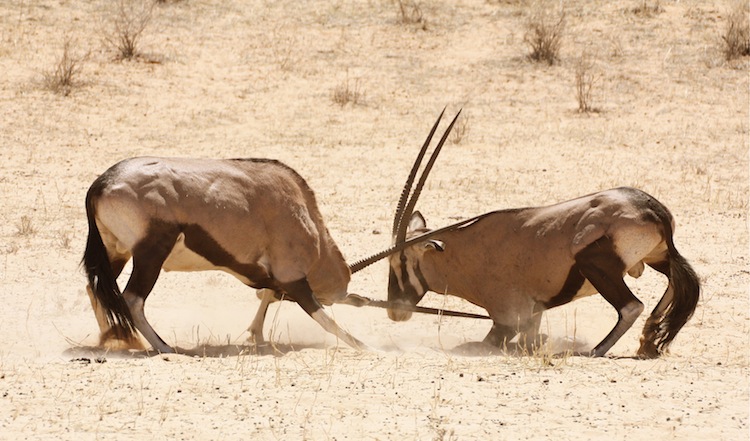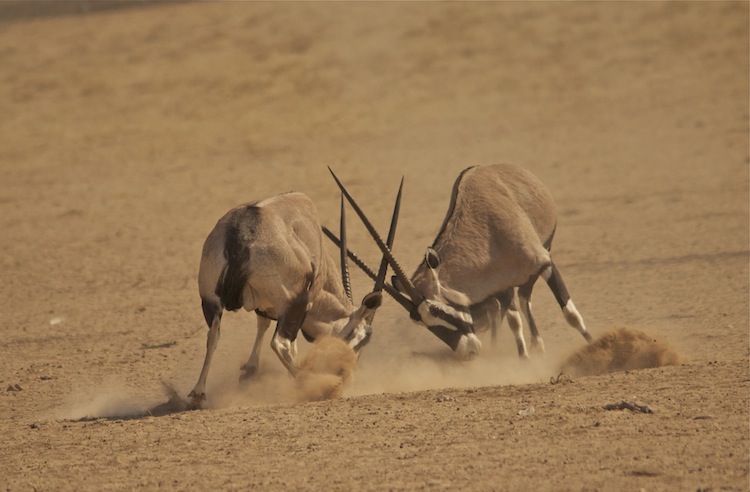
The Referee
Behavior
The sociality of males and females differs. A large proportion of males remain solitary and defend a territory. This may be due to differences in activity budget optimization. Single sex groups are more optimal for grazing. However, smaller herd sizes limit protection from predators. Also, increasing distance from the opposite sex limits reproduction.
Within groups, a distinct hierarchy is in place. The dominant male is at the top, followed by the dominant female. In large groups, there may be a second-ranked male, called a beta male. Herd leaders are typically identifiable by their position in the herd. The dominant male typically brings up the rear and retrieves stragglers. The dominant lead female typically takes the foremost position. The male will lead by aggressive displays, playing the role of main director of the movement of the animals. This hierarchy remains intact until a water scarcity, at which point the males take precedence over all females.

Aggressive displays are used by the males to establish the dominance hierarchy, and contact is usually minimal. Horns are used in both sidelong jabs and "fencing". As a result, distribution of animals in the herd is uniform, since gemsbok stand a horn's length from each other.

Herds are semi-closed to strangers, but not to adults older than one and a half years. Resident males will accept males into the group as well after little aggression.
Spore
Heavy splayed track; 11 - 13 cm long
Horns
The oryx's ringed horns are up to 30 inches long, making them formidable weapons. The female's horns are often longer and thinner than the male's.
The beautiful horns of the gemsbok are sought after as charms in many cultures and were even sold as unicorn horns in medieval England
A gemsbok horn can be fashioned into a natural trumpet and, according to some authorities, can be used as a shofar. (A shofar is a musical instrument of ancient origin, made of a horn, used for Jewish religious purposes.)
Enemies
Mainly Lion, Leopard, Hyena, Humans.





 Augrabies 7.10.2012
Augrabies 7.10.2012  thirsty
thirsty indeed, could be dangerous
indeed, could be dangerous